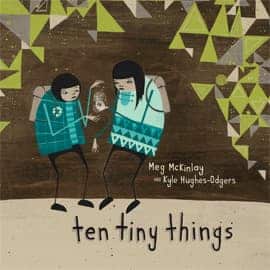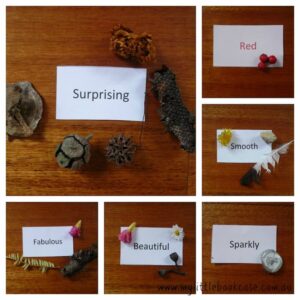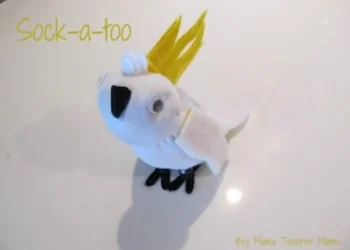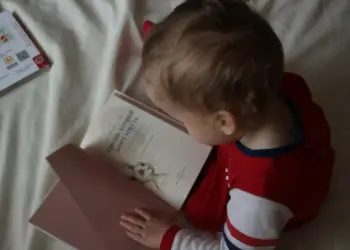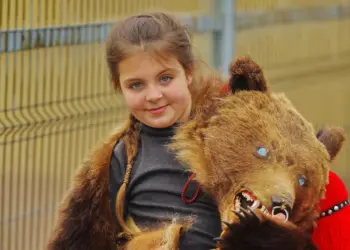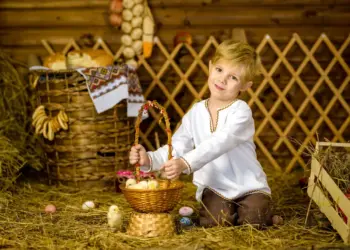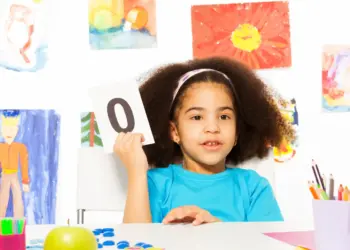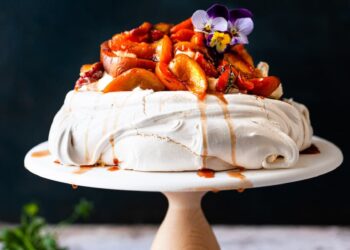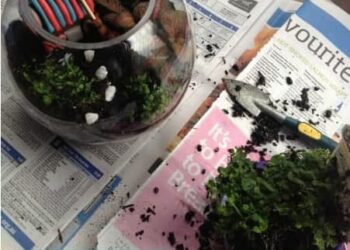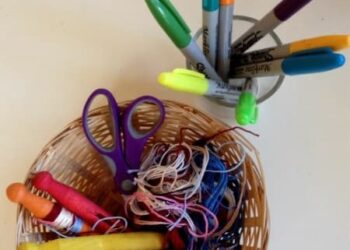Ten Tiny Things is an exquisite book, with a very significant message.
The language in the book is beautiful and alliterative, and the illustrations painted on wood panels are incredible and earthy (a very apt illustrative style for the book’s theme). Both help to create an engaging story for children and adults.
What an excellent walk.
It was slow and simple and splendiferous.
Tessa and Zachary rely on their machine to take them to school every day. When their machine breaks down, they are forced to walk to school. At first, they are horrified by the thought, until they start spotting tiny things, such as feathers and shells, in hidden places.
It doesn’t take the children long to realize that the world is made up of amazing things that you can’t see if you’re stuck indoors; the only way to enjoy the world is to slow down and explore it.
The story is a delightful one and although it’s not at all ‘preachy’, Meg’s message is very clear; society relies too heavily on technology to make life easier and more comfortable for us. Living a life that is easy and comfortable comes at a cost, one that prevents us from making the most of the beautiful, natural world around us.
Further book details can be found at the end of this post.
FOLLOW-UP ACTIVITIES
Tessa and Zachary’s adventure sounded like such a fun one, that we couldn’t wait to give it a go ourselves. What began as a walk to our playgroup became a string of explorative tasks. I do not doubt that if you read this book you will also feel inspired to take a walk. Meg McKinlay and Kyle Huges-Odgers are hoping that you do. They have set up a website for you to share your tiny discoveries, which you can find at https://www.mylittlebookcase.com.au/
1) MAKE A TINY COLLECTION BOX
We were ready for our walk. We knew when and where we were going, and we knew we were going to search for ten tiny things. But Cam was asking a few questions:
- What does tiny mean?
- How will we carry/store the tiny things that we find?
We searched through our art and craft cupboard and found this cheese box. We decided that it would be perfect for storing tiny things. If our treasures fit inside this box then we knew they would be tiny.
As a practice, we also searched for tiny things in our art and craft cupboard to decorate our Tiny Things Collection Box. And we were ready to embark on our exploration of the local area. Now we can’t walk anywhere without our tiny collection box
2) TAKE A ‘TEN TINY THINGS’ WALK
When I first read Ten Tiny Things, I read it with a lump in my throat. I am ‘that’ person who drives everywhere. I avoid walking if it’s too warm, too cold, too windy, too wet……. I certainly felt a strong pang of guilt as I read Ten Tiny Things. I loved the message of the book and was happy that it had such a strong effect on me. I was keen to put things right and set a positive example for Cam.
We decided to walk to our weekly playgroup session. It is a comfortable walk there (a bit more difficult on the way back) with lots to spot along the way.
It was a little ironic though, because the day we chose to walk to playgroup was one of Melbourne’s windiest days in history. Falling branches narrowly missed our heads and when we arrived at playgroup, a giant pine tree had sheared in half only minutes before. Had we not read Ten Tiny Things, I would have turned back to the car claiming that it was ‘too windy’, but we soldiered on.
We collected far more than ten things. Cam just couldn’t help herself:
- leaves
- stones
- bottle cap
- berries
- gum nuts
- seed pods
- feathers
- bark
- flowers
Cam had a smile on her face the whole time and couldn’t wait to do it again. Her favorite part was when we nearly got swept away by the wind, just like Peggy.
3) INTRODUCE ADJECTIVES
Meg McKinlay’s use of language in this book is exquisite. She uses the most beautiful adjectives and alliteration to describe the treasures found by Tessa and Zachary.
They saw surprising stones and shells.
We read this book many times before our walk, so I was hoping to help Cam understand the meaning of these adjectives.
On cards, I wrote the adjectives that appear in the book (and also made a few blank ones). One by one, we sorted through our tiny things, talking about them and categorizing them.
I asked Cam to describe some other objects, by thinking about what they look, sound, and feel like. These were her adjectives.
4) CREATE A COLLAGE
Our tiny things sat on our coffee table for a few days- just sitting there.
After a few days, Cam asked if she could make a picture with them.
5) PAINT ON TIMBER
One of the elements of this book that I find most intriguing is the illustration technique used by Kyle Hughes-Odgers. The illustrations were created by painting on timber panels.
Hubby is a carpenter, so I asked him for an offcut of timber. We also found some bark on the nature strip during our ‘Ten Tiny Things’ walk. It was an exciting prospect for Cam to be using the timber and bark as an
We used different techniques to paint the timber.
- Stencilling
- Using tiny things as painting tools
- Using plasticine as stamps and making impressions with the tiny things
We also enjoyed painting on bark:
Book Details:
Ten Tiny Things
Author: Meg McKinlay
Illustrator: Kyle Hughes-Odgers
ISBN: 978-1921888946
Format: Hardcover
Publisher: Fremantle Press, July 2012
Suitable for ages: 3+



